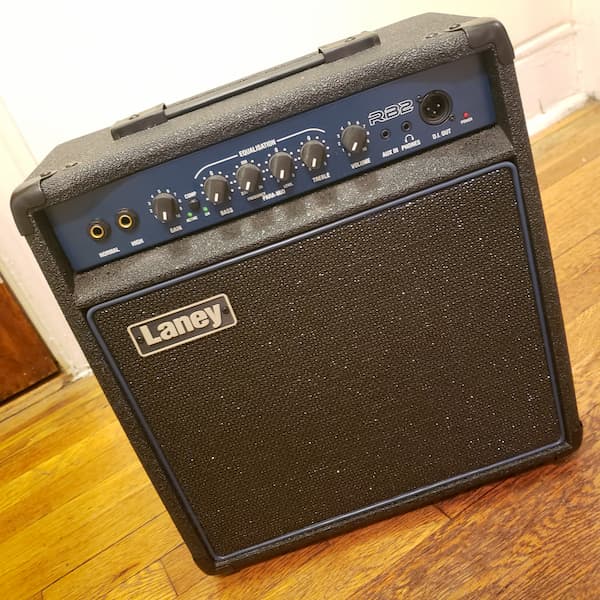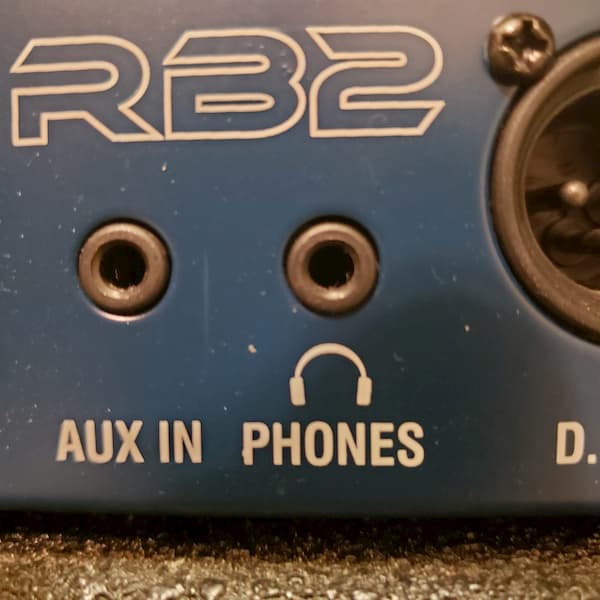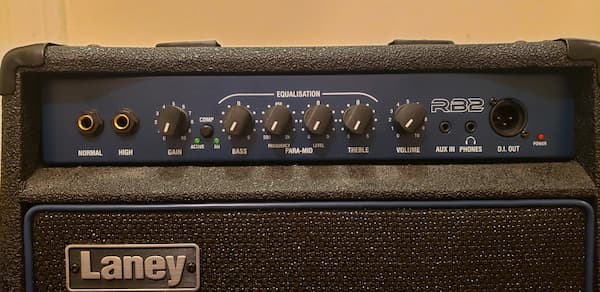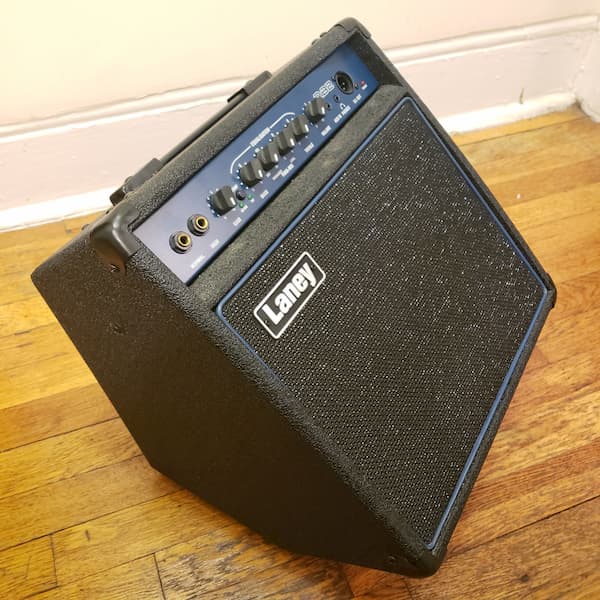My dear friends! What’s shaking? It’s been forever since my last post! How is your pandemic going? What about Halloween, Thanksgiving, Christmas, and New Years? In a previous post, I mentioned that I acquired a Laney RB2 bass amp because of reasons. Well, now I’m ready to tell you all about that!

Background
By the time I moved into my current home, any previous bass gear I owned was sold, apart from the bass guitars themselves. It was OK: I wasn’t playing in a band and was just messing about with my bit of light audio recording, for which I DIed the bass.
As noted in previous posts, I never really loved the tone of that. It seemed flat and lifeless. I can EQ it and add all kinds of effects while editing and mixing. But, with the noted pressure that effects et cetera puts on online DAWs like BandLab, it’s better to aim to get the input right.
I looked at tiny heads like the TC Electronic BAM200. But, if I wanted to ever do any kind of a live performance, I’d need a speaker. I’m not playing Madison Square Garden any time soon, and I live in a one-bedroom apartment, so I just needed something small.
I became a fan of Laney amps because they originated in Birmingham, UK, where I lived, and it’s still a place I’m very passionate about. I’ve had their VC15-110 guitar combo amp for a few years now, and I love it. When I decided to look at bass amps, I started with them.
The Laney RB2 seemed to check all the boxes. But damn! Laneys are expensive in America! I’d been looking at RB2s for months on Reverb and eBay, but could never find one for less than $200. Until November 2019… I scored one for $179 on Reverb. Result!
Right now on Reverb, new ones start at $319.99. Which still isn’t that expensive in the context of things, but still… it’s more noticeably more expensive than the UK. A quick check on a UK site lists it at £133 – that’s just over $180.
Laney RB2: Tech specs
| Tube or solid state | At this price, mate? Very, very solid state |
| Output | 30 watt RMS |
| Speaker size | 10 inch |
| Channels | At this price, mate? Very much just the one |
| Controls | Usual suspects: volume, gain, three-band EQ, but also on/off onboard compression; also worth noting that the EQ’s mids are split over two controls |
| Dimensions | 15.86 inches/ 403mm x 12.13 inches/ 308mm x 12.83 inches/ 326mm (HWD) |
| Weight | 23.8lbs/ 10.8kg |
| Any other cool stuff? |
|

Construction
Laney has been making amps for long enough now that they should have it in the bag. But, no harm in double checking!
With the kickback design of the RB2, it’ll get jigged around a bit more than a regular cuboid amp. Ultimately, it’s a solid block of an amp. Its weight will certainly keep it in whatever position you intend.
However, I think I’m most impressed with the front control panel. Firstly, that’s a nice metal plate. The controls are well laid out and their functions clear. Secondly, the control knobs themselves. They’re rubber, and feel much sturdier than the usual chicken-head style knobs.

Apart from that, it just feels like a solid, sturdily constructed box of low end. The black vinyl is cleanly cut, and there were no scuffs or blemishes on it. Giving the box a poke and a wobble, I’d be confident it would take a good amount of wear and tear as a gigging or house amp.
Tones
Now, for the most fun part of a review: talking about the noise!
However, with a single channel amp, there’s not too much to go into. Additionally, with the low volume I have to adhere to, it’s hard to pick out tonal nuances. But at the same time, budget amps like this aren’t exactly reknowned for nuance.
For example, I honestly can’t hear a tonal distinction between volume and gain. All I can hear is the sound getting louder. Maybe a pinch more aggression with the gain… but is that just because it’s getting louder?
Because I’m mainly a dopey guitarist, I set the EQ to match my guitar amp: bass at 4, mids and treble at 6. And I like it. In particular, I feel it gives the bass some bite. And I think that’s cool.
If I want to pull back on the bite, bring the mids and treble to four or five, and voila! Less cutting bass!
The Laney RB2 tones are similar to its construction: solid. While I probably could achieve a wide range of tones with it… my focus is light audio recording, and I don’t have time! I set what I like and run with it. Because not thinking about things like that is what helps my audio recording to be light.
Laney RB2: Conclusion
In summary, the Laney RB2 really is the perfect amp for my needs.
While it lacks the warmth of any tube, it gives shape to the bass I put into a light audio recording. Additionally, it doesn’t take up too much room in the apartment – it fits in the angle between my recliner and the wall, so that the recliner is at just the right angle to face the TV.
I can’t think of anything else I really need from it.
| Pros | Cons |
| Size – quiet enough for a small apartment, but loud enough for a tiny gig | Price in the US isn’t great – but keep an eye out for deals |
| XLR line out – great for light audio recording |

Thanks for reading!
If you found this helpful, subscribe on the right hand side of this page. You’ll be notified of new posts on Thursdays, inspiring you going into the weekend.
And share why you found it helpful. Because it helps us, and others!
Share your own light audio recording thoughts and experiences! There’s a Facebook group, a Subreddit, Twitter and Instagram.
Also, on LinkedIn, you can see the business-brain of Light Audio Recording at work.
Finally, this is a music project, so we’re on Spotify – the playlist below starts with the most recent release and works backwards. So, feel free to follow us!
However, do remember that it takes 2,000 plays on Spotify to generate a single dollar, so it would take 6,000 plays to get a coffee…
